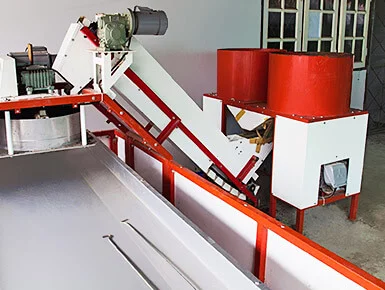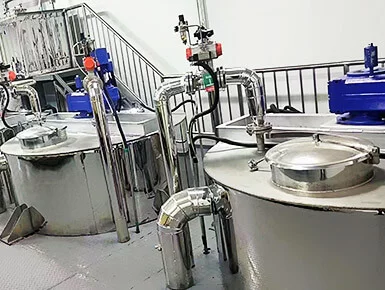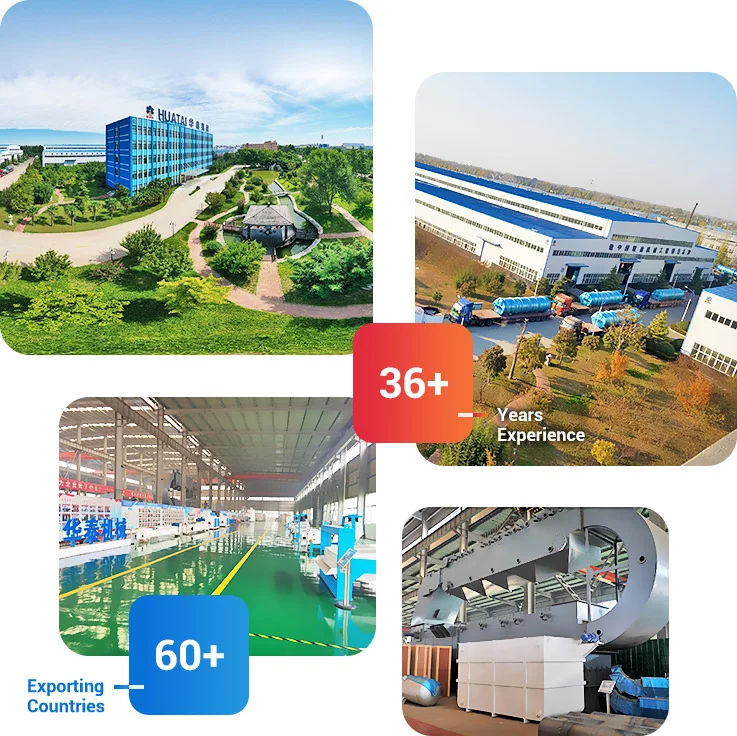
Introduction
With health-conscious consumers looking for natural edible oil alternatives, establishing a linseed oil manufacturing plant has significant business chance.
This article provides a comprehensive overview of linseed oil production, from its nutritional value and extraction methods to market analysis.
Whether you're planning small-scale flaxseed oil production line or constructing a large industrial facility, it will empower you to make informed decisions and maximize your return on investment.
What Is Linseed Oil?
Linseed oil, also known as flaxseed oil, comes from the seeds of the flax plant (Linum usitatissimum). It has a clear, amber appearance and a rich, aromatic flavor, making it highly popular.
People often call linseed oil the "Eastern Olive Oil" because it contains numerous fatty acids and micronutrients, offering exceptional nutritional value.
Research shows 100g of linseed oil contains:
- α-linolenic acid (ALA): 50-58g
- Linoleic acid (LA): 14-18g
- Monounsaturated fatty acids (oleic acid): 16-20g
- Saturated fatty acids (palmitic acid, stearic acid): 8-10g
- Vitamin E: 17-30mg
- Plant sterols: 130-240mg
These nutrients help reduce the risk of heart disease, high blood pressure, and inflammation. They also promote immunity and resistance while maintaining healthy skin and promoting hair growth.
![Flaxseed oil extraction process flow chart Flaxseed oil extraction process flow chart]()
How to Extract Oil from Flaxseed?
Step 1: Flaxseed Pretreatment
Flaxseed pretreatment is basis of the oil production process and directly affects oil yield, quality, and efficiency. The pretreatment process includes cleaning, dehulling, crushing, and cooking.
- Cleaning: Using vibrating screens, separators, and magnetic separators removes impurities like mud, stems, metal fragments, and weed seeds from flaxseeds, reducing impurities to below 0.5%.
- Dehulling: A dehulling machine first removes outer shell of flaxseeds, separates shells from kernels. This reduces equipment wear from husks. Control the dehulling rate between 85%-90%.
- Crushing and Flaking: Crush flaxseeds and roll them into thin flakes (0.2-0.3mm). This increases surface area, breaks down cell structures, and makes oil easier to release from cells.
- Cooking: In hot pressing, at atmospheric pressure and 170℃. This denatures proteins, reduces oil viscosity, and makes extraction easier.
Step 2: Three Flaxseed Oil Extraction Methods
Hot Pressing Method
Hot pressing is high-temperature cooking of flaxseeds before mechanical pressing. Filtering equipment processes pressed crude oil to separate oil residue. The filtered crude oil then enters the refining process or storage. Send filtered oil residue back to the cooking pot with cooked flaxseeds for re-pressing to improve oil yield.
Hot pressing advantages:
- High oil yield: High-temperature treatment significantly increases oil yield, reducing residual oil in cake to below 7%.
- Rich aroma: High temperatures trigger Maillard reactions between sugars and amino acids in flaxseeds, creating rich aromatic compounds. Studies show that roasting at 120-140℃ produces intensely fragrant linseed oil.
- Good oxidation stability: Properly heat-treated linseed oil shows improved oxidation stability, extending shelf life.
- Large processing capacity: Screw presses handle large volumes with continuous production and minimal labor intensity.
Hot pressing disadvantages:
- Nutrient loss: High temperatures oxidize α-linolenic acid in linseed oil and reduce vitamin E content.
- Darker color: High temperatures deepen oil color, requiring refining to improve appearance.
- Protein denaturation: High temperatures severely denature proteins in the cake, reducing its comprehensive utilization value.
Cold Pressing Method
Cold pressing physically squeezes flaxseeds at low temperatures (below 60℃), avoiding high temperatures from destroying nutrients. The process follows: Flaxseeds → Pretreatment (cleaning, dehulling, crushing) → Pressing → Filtering.
Cold pressing advantages:
- Preserves nutrients: Effectively retains α-linolenic acid and other polyunsaturated fatty acids.
- Natural flavor: Retains natural grassy aroma of flaxseeds.
- No chemical contamination: The process adds no chemical substances.
- High cake utilization value: Low protein denaturation makes the cake suitable for further use.
Cold pressing disadvantages:
- Low oil yield: Without high-temperature treatment, cell structures remain largely intact, resulting in lower oil yield and higher costs.
- Poor oxidation stability: The oil contains more pro-oxidant components, resulting in a shorter shelf life.
- Mild taste: The taste is fresh but lacks the rich aroma of traditional oils.
Solvent Extraction Method
Solvent extraction uses organic solvents (No. 6 light gasoline, n-hexane) to soak or spray pretreated flaxseeds, dissolving the oil. The solvent and dissolved oil form mixed oil, which then through evaporation and stripping to remove solvent and get pure crude oil.
Solvent extraction advantages:
- High oil yield: Extraction oil yield is significantly higher with pressing methods, reducing residual oil in cake to below 1%.
- Low cost: High production efficiency and low labor costs make this method suitable for large-scale production.
- Good cake quality: Compared to hot pressing, extraction meal shows lower protein denaturation and better quality, making it suitable for food industry.
- Good crude oil quality: Pre-pressing combined with extraction produces lighter-colored crude oil, refines easily into high-quality products.
Solvent extraction disadvantages:
- Nutrient loss: Active substances in linseed oil suffer severe damage, and α-linolenic acid content drops significantly to around 40%.
- Large equipment investment: Extraction equipment and supporting solvent recovery systems require substantial investment, and operators need high technical expertise.
- Environmental impact: Solvent volatilization may cause environmental pollution, requiring comprehensive recovery systems.
Henan Huatai Intelligent Equipment Group's edible oil extraction equipment effectively reduces steam consumption. Our extraction workshop equipment offers strong adaptability to meet different material processing requirements. Feel free to contact us anytime for consultation.
![Linseed oil refining process flow chart]()
Step 3: Flaxseed Oil Refining
Whether gets through pressing or extraction, crude linseed oil contains phospholipids, free fatty acids, pigments, odorous substances, and other impurities. Refining transforms it into high-quality edible oil that meets consumption standards. The refining process mainly includes degumming, deacidification (neutralization), decolorization, and deodorization.
- Degumming: Uses hydrophilic properties of colloids like phospholipids, adding hot water to remove phospholipids from crude oil.
- Deacidification (Neutralization): Add an appropriate amount of sodium hydroxide to crude oil. This reacts with free fatty acids to form soapstock, then separates by centrifugation.
- Decolorization: Using adsorbents like activated clay or activated carbon, treat oil at 90-110℃, adsorbing and removing pigments such as chlorophyll and carotenoids.
- Deodorization: Through steam distillation, under high temperature (>200℃) and high vacuum (absolute pressure <5mbar), direct steam stripping removes volatile odorous such as aldehydes and ketones from the oil.
Step 4: Flaxseed Oil Filling and Storage
Filling refined flaxseed oil to prevent oxidative deterioration and facilitate transportation and sales.
- Nitrogen protection: During filling, inject inert gases such as nitrogen to delay oil oxidation.
- Light-proof packaging: Dark glass bottles or opaque containers prevent ultraviolet light from accelerating oil oxidation.
- Automated filling: Fully automated filling lines improve efficiency and reduce human contamination.
- Temperature control: Storage temperature below 15℃ slows oxidation rates.
- Sealed containers: Well-sealed containers prevent oxygen entry and oil volatilization.
Linseed Oil Plant Investment Cost Analysis
The cost of setting up a linseed oil processing plant depends on equipment automation level, processing technology, refining level, and many other factors. Here are investment cost estimates for establishing linseed oil plants of different scales:
| Processing Capacity (tons/day) |
Estimated Investment Cost (USD) |
Main Components |
| 1-10 tons/day |
$7,500-125,000 |
Small-scale pretreatment equipment, pressing equipment, basic refining lines, filling equipment, plant retrofitting. |
| 10-50 tons/day |
$125,000-650,000 |
Medium-scale pretreatment equipment, pressing/extraction equipment, complete refining lines, automated filling, plant construction. |
| 50-100 tons/day |
$650,000-1,500,000 |
Large-scale pretreatment lines, extraction equipment, automated refining lines, fully automated packaging lines, large-scale plants and supporting facilities |
For example:
Shanxi Changsheng Oil Company's comprehensive flaxseed processing project requires a total investment of $36 million, with an annual production of 40,000 tons of linseed oil and deep-processed products.
Zhangjiakou City Chongli District's specialty agricultural product deep-processing project plans a total investment of $1.65 million for a linseed oil production line with an annual output of 1,000 tons.
Global Market Analysis of Linseed Oil
| Country |
Annual Production (10,000 MT) |
| Canada |
15-20 |
| China |
10-15 |
| United States |
10-15 |
| Germany |
3-5 |
| India |
2-4 |
Market Analysis: From a global perspective, North America (Canada and United States) and Europe are the two core production and consumption regions for linseed oil. Canada holds a globally important position in the production and export of flaxseed and its products. Meanwhile, research shows, China's linseed oil production in 2025 will reach 120,000 tons, while demand will reach 135,000 tons, creating a supply gap.
Conclusion
The linseed oil industry offers tremendous potential for growth and profitability. With right equipment, processing methods, and expert guidance, you can set up a successful linseed oil manufacturing plant, meets the growing market demand.
Henan Huatai Intelligent Equipment Group has more than 37 years of experience in edible oil processing technology and equipment manufacturing. Our team provides turnkey solutions—from initial plant design and equipment selection to installation, commissioning, and after-sales support. We customize solutions to match your budget, production capacity goals, and quality standards.
Contact us today for a free consultation and detailed quotation. Let our experts help you turn your linseed oil manufacturing vision into a profitable reality.
![]() Service Coverage
Service Coverage
![]() FAQ
FAQ











